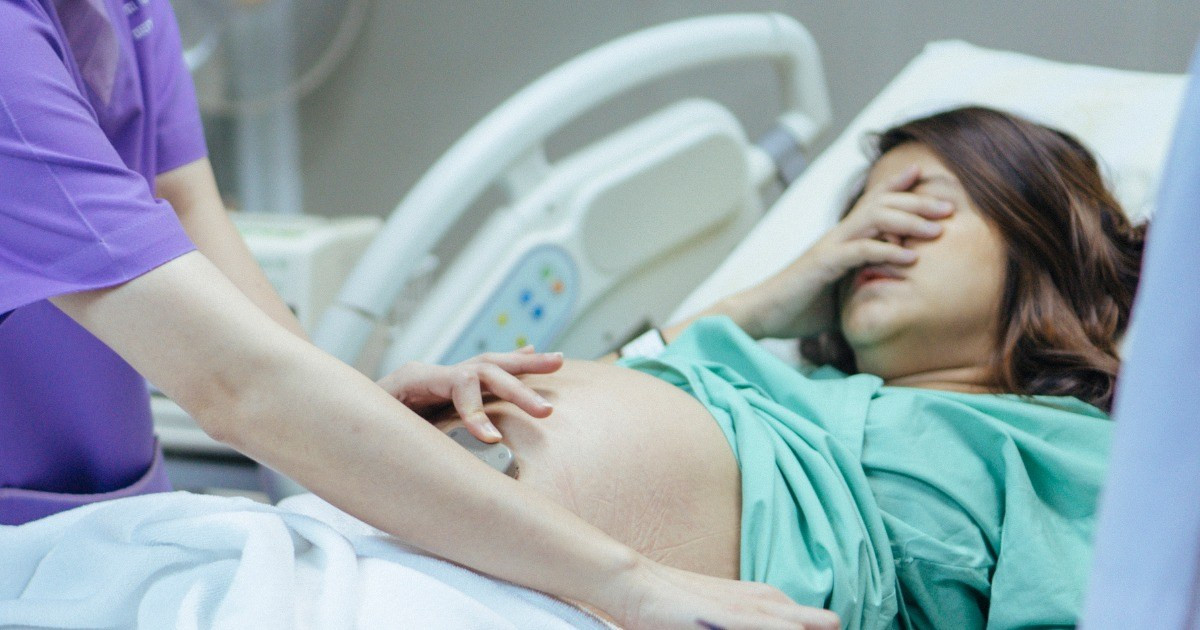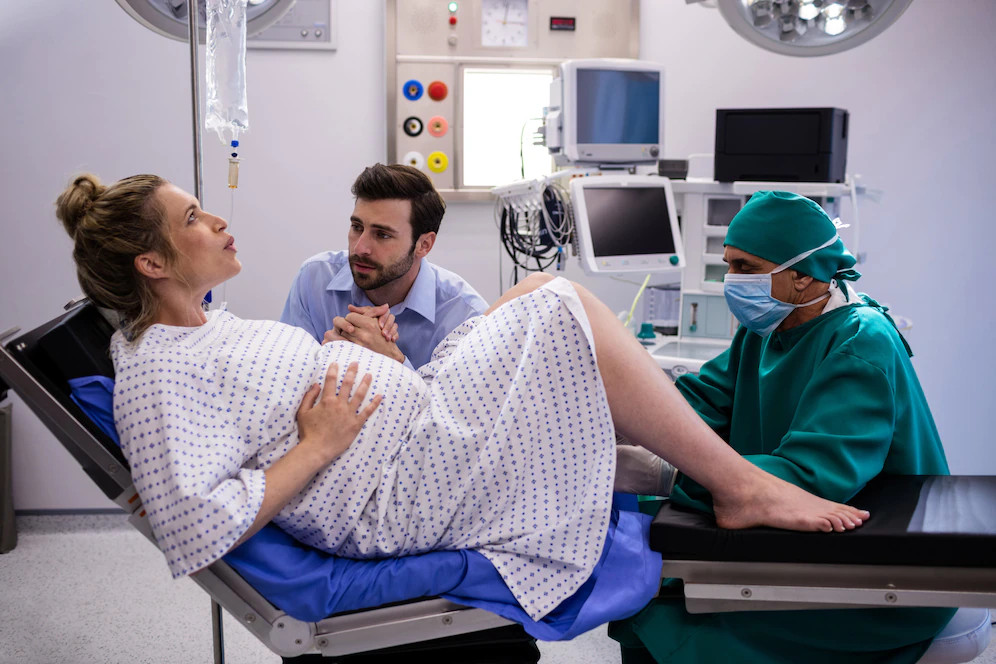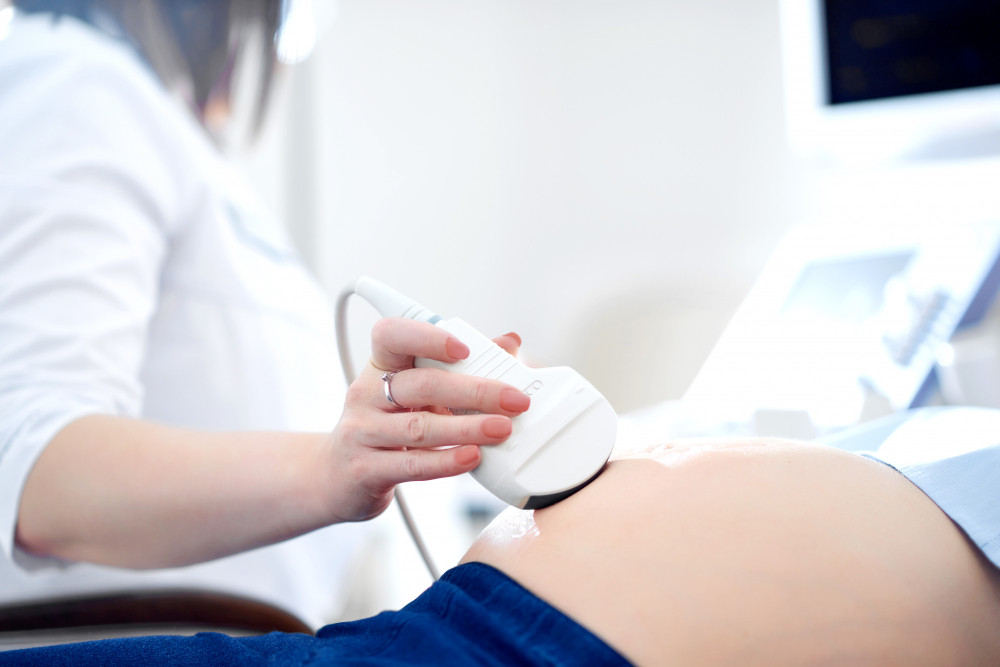Definition
Cervical rupture is a condition characterized by a tear in the cervical tissue (the neck of the uterus). Tears can occur during childbirth or due to certain procedures.
The cervix is a long, dense, and thick part of the uterus composed of muscle tissue. During childbirth, contractions cause the thick cervical tissue to thin, widen, and open, allowing the baby to exit the uterus. In this process, the stretched cervical tissue can easily tear.
Tears in the cervical tissue can extend to the vaginal and perineal tissues (the skin between the vagina and anus). A tear near the vaginal wall may cause minor injury with minimal bleeding. However, a tear at the cervix itself can be severe and result in significant bleeding. Heavy bleeding can reduce body fluid volume, leading to shock and death.
Cervical rupture can increase morbidity and mortality rates in mothers if not promptly and properly treated. Therefore, cervical rupture is considered a medical emergency.
We also have articles about injuries to the genitals that you can see here: Genital Trauma - Definition, Cause And Risk Factor.
Causes
Cervical rupture can occur when the cervical tissue stretches too much and does not fully relax. Cervical rupture is a common cause of postpartum hemorrhage, especially during difficult deliveries requiring instruments like forceps. However, other factors can also cause cervical rupture, such as:
- Cervical infection
- Medications that induce uterine contractions during labor
- Delivering a large baby, causing excessive cervical stretching
- Swelling or inflammation of the cervical tissue due to prolonged labor
- Shoulder dystocia (difficulty delivering the baby's shoulder)
- Scar tissue on the cervix from previous tears
- Undergoing certain procedures on the cervix, such as cervical amputation
- Pushing too early before the cervix is fully dilated, causing the baby's head to press on the cervix and trigger a tear
You can read further about shoulder dystocia here: Shoulder Dystocia - Definition, Cause And Risk Factor.
Risk Factor
The risk of cervical rupture increases in the following conditions:
- First delivery
- History of diabetes mellitus
- Use of induction medications during labor
- Prolonged labor
- Excessive fetal weight
- Mother's body mass index (BMI) above normal
- Use of delivery instruments like forceps and vacuum
- Episiotomy procedures (incision in the vagina to facilitate delivery)
- History of cervical stitching procedures
- Rapid labor, less than 3 hours from the onset of contractions
- History of cervical conditions like infections and previous cervical tears
Symptoms
Signs and symptoms of cervical rupture include:
- Active and heavy bleeding before or after delivery
- Pain in the birth canal
The amount of bleeding in a cervical rupture depends on the type of tear. If the tear is small, bleeding is minimal and may heal on its own. However, tears involving the front and back of the cervix result in significant blood loss.
Additionally, physical examination may reveal an increased pulse rate or heartbeat in response to blood loss. If excessive blood loss occurs and is not promptly controlled, blood pressure will drop, leading to organ oxygen deprivation, shock, and potentially life-threatening conditions.
Diagnosis
A cervical rupture diagnosis is made after ruling out the possibility of uterine rupture, as both conditions present with similar symptoms, such as genital bleeding.
The doctor diagnoses cervical rupture through performing a number of actions. The doctor will inquire about your symptoms in relation to the above-described symptoms of cervical rupture. The doctor then gathers information about the history of risk factors that increase the risk of cervical rupture.
A general physical examination, including vital signs (blood pressure, pulse, and respiratory rate), will assess overall stability. The doctor will perform a specific physical examination of the vaginal area using a speculum to observe the vagina, birth canal, and cervix. The doctor will check for:
- Presence of a cervical tear
- Tear location
- Tear size
- Source of bleeding
- Extension of the tear into the vagina
Additional tests like ultrasound (USG) can help confirm the diagnosis of cervical rupture.
Management
Due to the impact of bleeding on the patient's condition, the doctor will ensure patient stability or provide initial treatment if necessary. If the mother experiences significant blood loss, fluid therapy may be administered to replace lost blood due to the tear that occurred.
Bleeding usually stops by applying pressure to the cervical tear area. The stitching procedure will depend on the tear size; small tears may not require stitching, while large tears will be stitched to stop bleeding and prevent excessive blood loss.
In case of cervical rupture, the doctor will also give pain medication to relieve the pain experienced by the patient. In addition, patients also receive antibiotic therapy to prevent infection.
Complications
Cervical rupture complications due to tears include active and heavy bleeding. This condition can result in significant blood loss, leading to fluid deficiency (hypovolemia) and shock. Prompt and appropriate treatment is necessary to prevent these complications. Infection is another reported complication in cervical rupture cases.
Prevention
Cervical rupture can be prevented by identifying risk factors related to labor, such as prolonged labor and large fetal size. Regular prenatal checkups can help determine if a pregnancy is high-risk. The doctor may recommend a cesarean section in certain conditions.
When to See a Doctor?
If you are pregnant and experience active, heavy bleeding accompanied by severe lower abdominal or genital pain, seek immediate medical attention at the nearest healthcare facility. Medical professionals will evaluate and manage your condition immediately.
Looking for more information about other diseases? Click here!
- dr. Alvidiani Agustina Damanik
Treatment Method for Cervical Tear – Vinmec. (2022). Retrieved 5 November 2022, from https://www.vinmec.com/en/news/health-news/obstetrics-gynecology-and-assisted-reproductive-technologies-art/treatment-method-for-cervical-tear/.
Effect of Cervical Tear and How To Treat? – Vinmec. (2022). Retrieved 5 November 2022, from https://www.vinmec.com/en/news/health-news/obstetrics-gynecology-and-assisted-reproductive-technologies-art/effects-of-cervical-tear-and-how-to-treat/.
Cervical and Vaginal Tears – MSF Medical guideline. (2022). Retrieved 5 November 2022, from https://medicalguidelines.msf.org/en/viewport/ONC/english/8-5-cervical-and-vaginal-tears-51417825.html?language_content_entity=en.
Cervical Tears – Veterian Key. (2022). Retrieved 5 November 2022, from https://veteriankey.com/cervical-tears/.
Fessehaye A. (2022). Bucket-handle cervical tear at term following oxytocin-induce vaginal delivery: case report. Retrieved 5 November 2022, from https://jmedicalcasereports.biomedcentral.com/articles/10.1186/s13256-022-03269-y.











